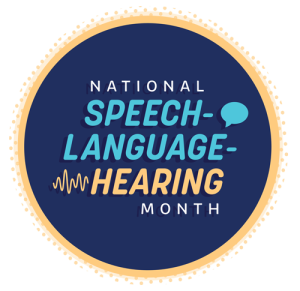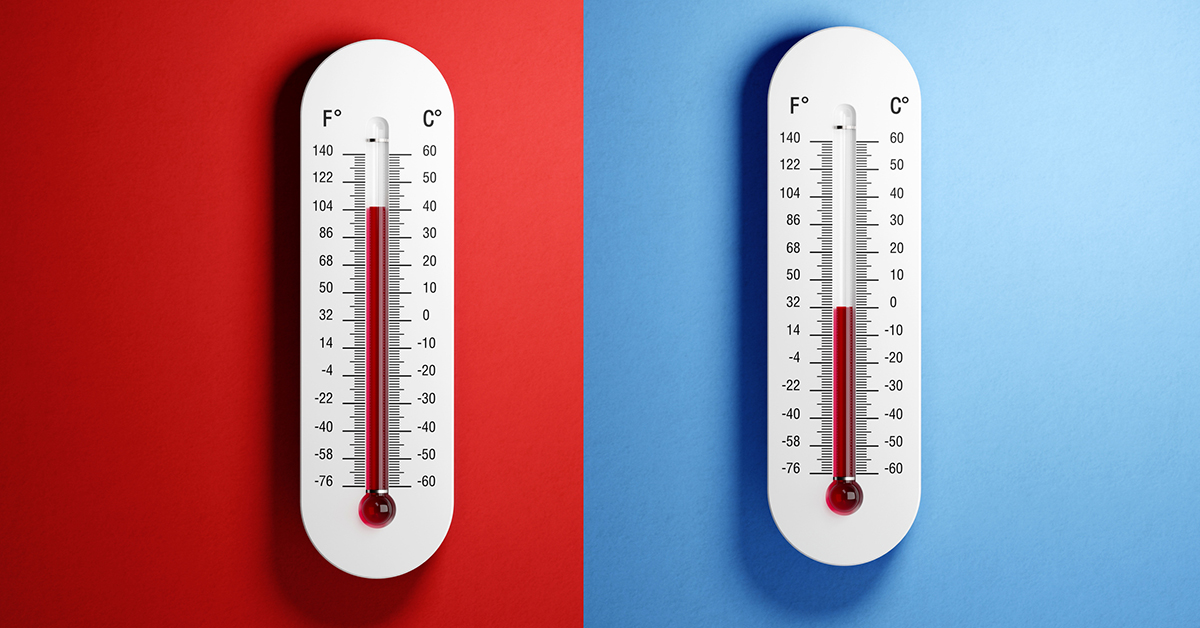
Communication is a complex dance between our thoughts, words, and ability to understand others. Sometimes, things can go out of step, leading to speech-language disorders. These disorders can affect people of all ages and abilities.
Each May, we shed light on these disorders during National Speech-Language-Hearing Month to raise awareness and encourage early intervention. Established in 1927, this awareness month (formerly known as Better Speech and Hearing Month) has grown to encompass the vast world of communication difficulties people face.
A spectrum of challenges
Communication disorders are a diverse bunch, affecting how we understand, express, and process information. These can arise for various reasons, such as developmental delays, brain injuries, or even aging.
Here’s a quick eye-opener:
- Nearly 1 in 12 U.S. children has had a disorder related to voice, speech, language, or swallowing.
- Nearly half of U.S. children with a voice, speech, language, or swallowing disorder have not received intervention services in the past year.
- More than 3 million Americans have a stutter.
- Approximately 9.4 million adults report having a problem using their voice that lasted one week or longer.
- Approximately 2 million Americans suffer from aphasia, the loss of ability to understand and express speech.
Source: National Institute on Deafness and Other Communication Disorders
Understanding different communication disorders
Here’s a breakdown of some common types to help you understand them better:
Cognitive-communication disorders
Imagine forgetting what you were just about to say or struggling to follow instructions with multiple steps. These are some signs of cognitive-communication disorders. They affect the thinking skills that support communication, like memory, attention, problem-solving and organization.
- Example: An older adult with dementia might have difficulty remembering names or struggle to follow a conversation with multiple people talking.
Speech disorders
This category addresses how clearly we can produce sounds.
- Articulation: This involves difficulty forming proper sounds with the mouth, which causes sounds to be made improperly.
- Example: A child who says “wabbit” instead of “rabbit” might have an articulation disorder involving the “r” sound.
- Fluency (stuttering): This involves involuntary repetitions, pauses, or prolongations of sounds during speech.
- Example: Someone who stutters might say “Th-th-the b-b-book is on the table”
- Dysarthria: This is a weakness or lack of coordination in the muscles in the mouth and face used for speech, making it slurred or difficult to understand.
- Example: Someone who has had a stroke might experience dysarthria, making their speech sound weak and mumbled.
Language disorders
These disorders affect our ability to understand and use language, spoken or written.
- Phonology: This is the sound system of language. Someone with a phonological disorder might have trouble perceiving the difference between certain sounds.
- Example: A child might confuse the sounds “b” and “p,” saying “bay” instead of “pay.”
- Morphology: This refers to word structure. Difficulties with morphology can make it hard to understand or use grammatical structures like plurals or past tense.
- Example: Someone with a morphology disorder might say “goed” instead of “went.”
- Syntax: This is the way we put words together to form sentences. Someone with a syntax disorder might struggle to structure sentences grammatically.
- Example: A child with a syntax disorder might say “Big red car go fast” instead of “The big red car goes fast.”
- Semantics: This refers to the meaning of words and sentences. Someone with a semantic disorder might have difficulty understanding the meaning of words or struggle to express themselves clearly.
- Example: Someone with a semantic disorder might take the phrase “kick the bucket” literally, not understanding it means to die.
- Social language (pragmatics): This involves using language appropriately in different social contexts. Someone with social language difficulties might struggle to take turns in conversation or understand nonverbal cues like facial expressions.
- Example: A child with social language difficulties might interrupt others constantly or have trouble understanding sarcasm.
- Aphasia: This is a language disorder caused by brain damage, like a stroke or head injury. It can affect any or all aspects of language, including speaking, understanding, reading, and writing.
- Example: Someone with aphasia might have difficulty finding the words they want to say or struggle to understand what others are saying to them.
Swallowing disorders
Swallowing is a complex process that can be disrupted by various factors.
- Aspiration/penetration: This is when food or liquid goes into the lungs (aspiration) or vocal cords (penetration) during swallowing, which can be dangerous.
Voice disorders
Our voices are like fingerprints – unique and essential for communication. Voice disorders can affect the quality, pitch, or volume of our voice.
- Hoarseness: This is a rough, breathy voice quality, often caused by overuse or misuse of the vocal cords.
- Examples: Someone who has been yelling at a sporting event might experience hoarseness, or an infant can experience hoarseness from excessive crying.
- Poor volume: This can be due to weak vocal cords or difficulty controlling breath support.
- Example: Someone with Parkinson’s Disease may experience speaking in a soft and monotone voice, slurring words or mumbling.
- Abnormal vocal quality: This includes breathiness, strain, or nasality in the voice.
- Vocal cord damage: Polyps, nodules, or lesions on the vocal cords can affect voice quality.
The superpowers of Speech-Language Pathologists (SLPs)
Welia Health is proud to have a team of dedicated SLPs who make a significant difference in the lives of their patients. Think of SLPs as communication detectives. They are certified healthcare providers with the specific expertise to identify, evaluate, diagnose, and treat communication disorders across all ages.
Imagine a child struggling to speak clearly. An SLP would assess the child’s challenges and create a personalized therapy plan with fun exercises and games to improve articulation. Or perhaps an adult has difficulty swallowing after a stroke. An SLP would design a treatment plan with specific techniques and strategies to help them swallow safely and efficiently.
“As an SLP, it is incredibly rewarding to support a toddler as they use their first words, a preschooler as they learn to use sounds in the correct ways so they are understood by their family and peers, and adults as they regain the ability to communicate and swallow effectively in order to engage in life with their loved ones. It is an honor to serve people of all ages in this fulfilling role at Welia Health.”
Julie Rue, MS, CCC-SLP
Welia Health Speech Language Pathologist
Early intervention is key
Just like any challenge, early identification and intervention are crucial for maximizing success. By raising awareness about communication disorders and the role of SLPs, we can empower individuals and families to seek help and improve their communication skills.
Taking the next step
If you suspect you or someone you know might have a communication disorder, Welia Health is here to help. Schedule a consultation with your primary care provider or an SLP for a comprehensive evaluation. SLPs can be that guiding light, helping individuals overcome communication challenges and achieve their full potential. Remember, you don’t have to face these challenges alone.
Speech-language pathology services are available in Mora, Hinckley and Pine City. To learn more, call Rehabilitation Services at 320.225.3356. A referral may be required for speech-language pathology services, please check with your primary care provider and your insurance carrier.













